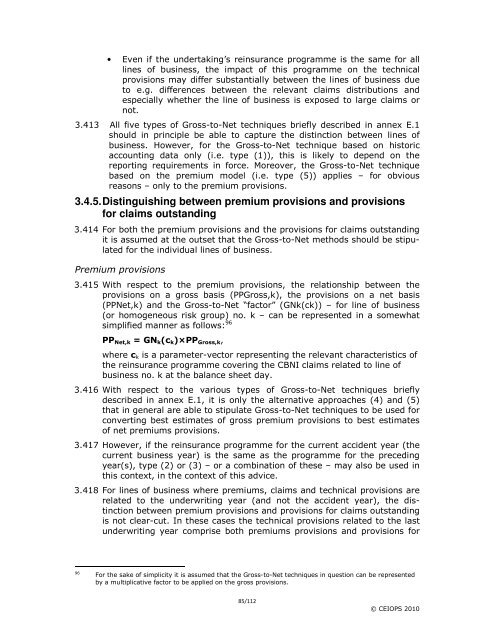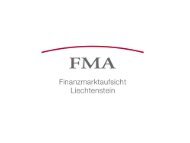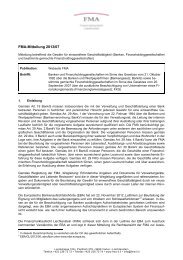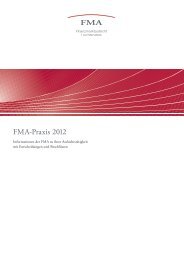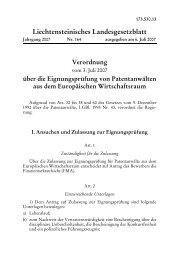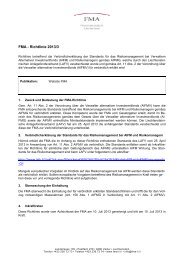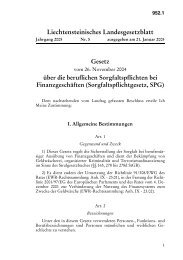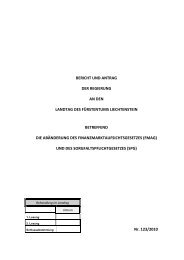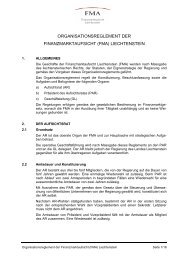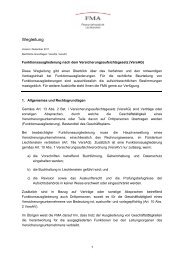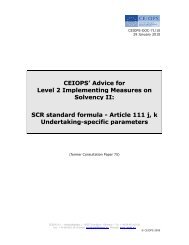CEIOPS' Advice for Level 2 Implementing ... - EIOPA - Europa
CEIOPS' Advice for Level 2 Implementing ... - EIOPA - Europa
CEIOPS' Advice for Level 2 Implementing ... - EIOPA - Europa
Create successful ePaper yourself
Turn your PDF publications into a flip-book with our unique Google optimized e-Paper software.
• Even if the undertaking’s reinsurance programme is the same <strong>for</strong> all<br />
lines of business, the impact of this programme on the technical<br />
provisions may differ substantially between the lines of business due<br />
to e.g. differences between the relevant claims distributions and<br />
especially whether the line of business is exposed to large claims or<br />
not.<br />
3.413 All five types of Gross-to-Net techniques briefly described in annex E.1<br />
should in principle be able to capture the distinction between lines of<br />
business. However, <strong>for</strong> the Gross-to-Net technique based on historic<br />
accounting data only (i.e. type (1)), this is likely to depend on the<br />
reporting requirements in <strong>for</strong>ce. Moreover, the Gross-to-Net technique<br />
based on the premium model (i.e. type (5)) applies – <strong>for</strong> obvious<br />
reasons – only to the premium provisions.<br />
3.4.5. Distinguishing between premium provisions and provisions<br />
<strong>for</strong> claims outstanding<br />
3.414 For both the premium provisions and the provisions <strong>for</strong> claims outstanding<br />
it is assumed at the outset that the Gross-to-Net methods should be stipulated<br />
<strong>for</strong> the individual lines of business.<br />
Premium provisions<br />
3.415 With respect to the premium provisions, the relationship between the<br />
provisions on a gross basis (PPGross,k), the provisions on a net basis<br />
(PPNet,k) and the Gross-to-Net “factor” (GNk(ck)) – <strong>for</strong> line of business<br />
(or homogeneous risk group) no. k – can be represented in a somewhat<br />
simplified manner as follows: 96<br />
PPNet,k = GNk(ck)×PPGross,k,<br />
where ck is a parameter-vector representing the relevant characteristics of<br />
the reinsurance programme covering the CBNI claims related to line of<br />
business no. k at the balance sheet day.<br />
3.416 With respect to the various types of Gross-to-Net techniques briefly<br />
described in annex E.1, it is only the alternative approaches (4) and (5)<br />
that in general are able to stipulate Gross-to-Net techniques to be used <strong>for</strong><br />
converting best estimates of gross premium provisions to best estimates<br />
of net premiums provisions.<br />
3.417 However, if the reinsurance programme <strong>for</strong> the current accident year (the<br />
current business year) is the same as the programme <strong>for</strong> the preceding<br />
year(s), type (2) or (3) – or a combination of these – may also be used in<br />
this context, in the context of this advice.<br />
3.418 For lines of business where premiums, claims and technical provisions are<br />
related to the underwriting year (and not the accident year), the distinction<br />
between premium provisions and provisions <strong>for</strong> claims outstanding<br />
is not clear-cut. In these cases the technical provisions related to the last<br />
underwriting year comprise both premiums provisions and provisions <strong>for</strong><br />
96 For the sake of simplicity it is assumed that the Gross-to-Net techniques in question can be represented<br />
by a multiplicative factor to be applied on the gross provisions.<br />
85/112<br />
© CEIOPS 2010


